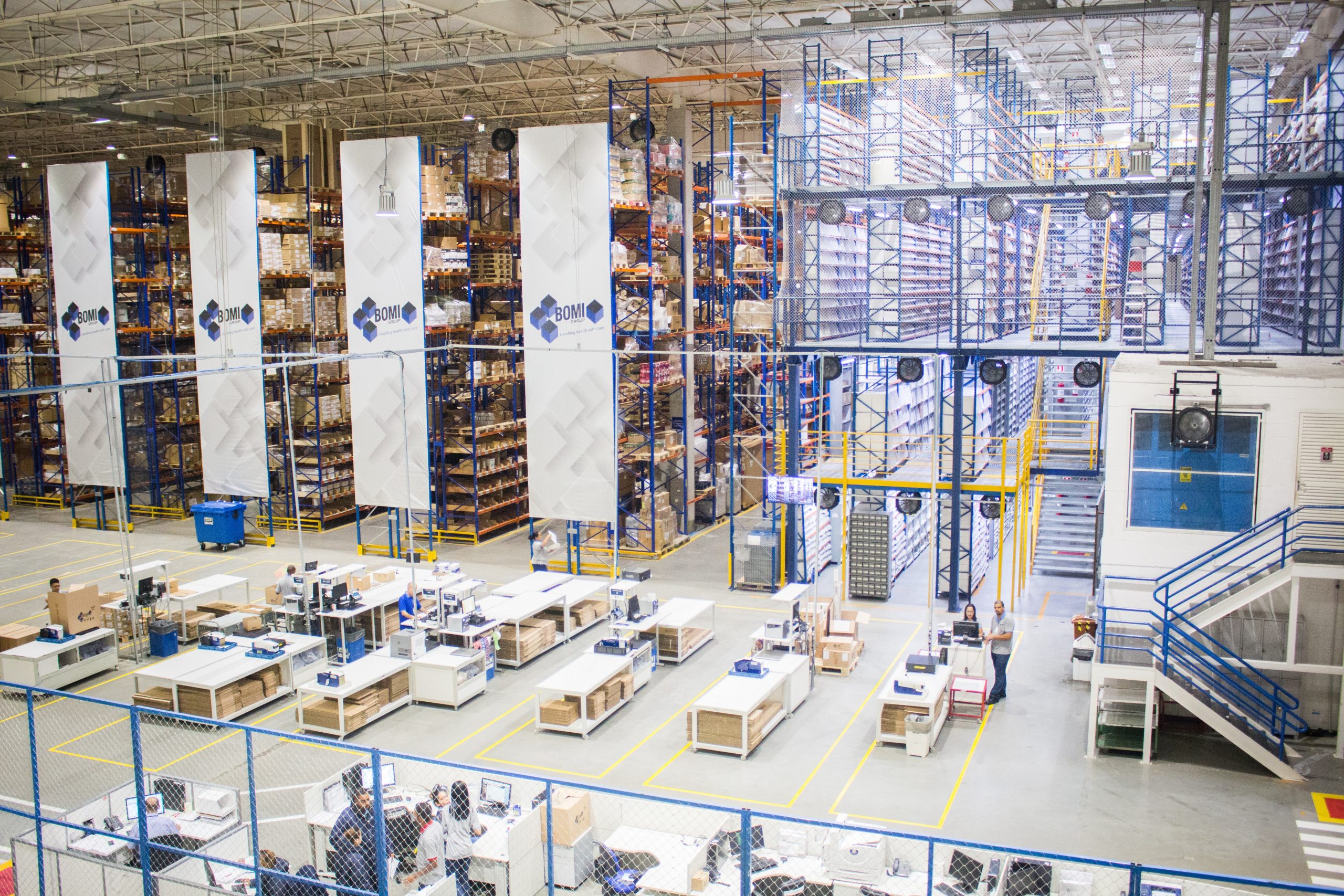Commercial Property Estate Agents all across the UK have a vast spectrum of commercial property on their books, eager to tempt the most shrewd of commercial property investor.
Once aligned with your choice of agent, one of the most important questions between you, will be exactly which type of commercial property it is in which you’re looking to invest in. This may seem like a simple question, but the root of is much more complex. Ultimately, as a commercial property owner, your primary goal is likely to be seeing the greatest return on your investment, but just how do you realise that at the earliest stages?
The good news is that the best agents will be able to talk you through so much more than merely the buying process. They’ll take a look at your financial projections and just how much involvement you’re looking to put in as an investor – be it ‘hands on’ or more remote.
The types of commercial property fall neatly into five main categories – retail units, offices, industrial units, leisure, and finally healthcare. Within each of those, the local councils will have imposed a classification for usage.
In this article, we’re going to take a look at these classifications, along with what we hope will be some sage advice when first looking to invest in commercial property.
Any non residential building, from a single store or an entire shopping centre, will have been granted a classification from the local authority, which allows only certain types of business to operate on those premises.
Types Of Commercial Property
You may well have noticed that when a certain type of business, say, a restaurant closes down, that there’s a good chance that another restaurant will open in its place. Whilst there could be a host of other reasons, the main one will be because that premises has what is known as an A3 classification – food and drink can be served on those premises.
We’ll delve into classifications a little later on in this article, but now that we have an overview of how this all works, let’s take a look at the types of commercial property widely available throughout the UK.
Retail Units
Retail units all fall under classifications that begin with the letter A. Regardless of the size or position of the commercial property in question, the building will have this classification – sometimes also referred to as its Planning Class. It’s very important to establish what this is at the outset, for reasons which will become clear later.
Retail units classifications range from A1 to A4. Let’s break them down for you:
A1 is the most common, and whilst we could go into exquisite detail about what is and, more important, what is not A1, that list is fairly exhaustive. Once again, if you’re planning on investing in commercial property as a landlord you’ll find this may well be of lesser concern, as there’ll be a wide spectrum of businesses that could become tenants. If however, you’re reading this from the perspective of a business tenant, do make a point of checking the full list from your local authority, to ensure that your business would be legally allowed to operate from the commercial property in question.
A1 is for the retail of any goods other than hot food, post offices, ticket sales, travel agents, cold food which cannot be eaten on the premises, hairdressers, domestic goods for hire, funeral directors and for the reception of goods to be washed or repaired.
A2 is for the provision of financial and professional services. This would include the likes of banks, accountancy services, professional services other than healthcare or medical, or any other services deemed appropriate to provide in a shopping area where those services are provided typically to visiting members of the public. This would include, for example, betting shops.
Granted, there are many financial advisors that work in offices rather than retail outlets, but it’s not necessary for them to seek a change in the classification of their building. Local councils are primarily concerned with continuity, and certainly much more with their high street and those in the A1-A4 group as opposed to offices.
A change in classification can be a lengthy and expensive process. As we mentioned before, this is why a shop that closes down is often replaced by a similar business. Clearly, the A1 category is open to quite a wide spectrum, but there is still room for uncertainty, so it’s best to check with your commercial property agent.
Next on to the A3 classification, which is for restaurants, snack bars and cafes. Licenses to sell alcohol fall into a whole different category, with which we will not concern ourselves here, but pubs and wine bars fall under the A4 classification. To be clear, this classification of commercial property does not include night clubs, as the leisure and hospitality industry has a classification all their own.
Offices
Improvements in broadband speeds and telecommunications has seen a sharp increase in the number of full time employees who are able to work from home. As a result, many people will consider their spare room as their office. It’s an important distinction that, in order to run a business in this way, the premises in question must have a bedroom.
This means that the property is classed as a residence – the person working there doesn’t need to be the home owner or a tenant. Indeed, many home based operations have staff that come in on a daily basis. The important thing is that, from the point of view of being classified, the office in question is regarded as a residential dwelling.
The vast majority of offices however, are of course, purpose built buildings, and come with the commercial property classification B1 – Business. This classification means that this type of commercial property can house any business, although there are some reasonable exceptions.
For example, a business manufacturing cars is certainly going to need administrative offices but is also going to need a factory. Here, there are classifications that run from B3-B7 which are each concerned with specific types of industry, and we’ll go into that a little later on as well. Indeed, B1 does have a little more ‘legal speak’ within it, that states that general industrial work includes work that can be carried out in any residential area without detriment to the amenity of that area by reason of noise, vibration, smell, fumes, smoke, ash, dust or grit.
Returning to our offices, although all under one classification, the spectrum of available office spaces throughout the UK is vast, and it’s important to align yourself with an agent who truly understands your business. You may feel you only need space for 10 people now, but what do your forecasts tell you? Could you be at double that size within a year? If so, getting locked into a 5 year lease in a space that’s too small could prove very costly, as you’ll need to consider secondary premises, which can often prove impractical and, in the long term, very expensive.
Smaller offices – those suitable for one or two man operations, tend to be found, most commonly, in serviced offices. These spaces will house any number of small businesses within their walls. Some larger organisations may take an entire floor or number of floors, as even though this can lead to some very high rental rates, such a proposition could still prove cheaper than acquiring a building of their own.
Of course, not all small offices are to be found in serviced office buildings. Many commercial property investors purchase retail outlets with offices above. In some instances, the tenants of the retail outlet may want to utilise the offices, but not always, and this means that the landlord can lease those offices to different tenants.
Some more enterprising tenants take on the entire unit and then, with the permission of the landlord, sublet the offices themselves. Most landlords have no issue with this because they can adopt much less of a ‘hands on’ approach – having only to deal with one tenant, rather than several.
Those larger corporations that do occupy entire buildings may not necessarily own the building in question themselves. In fact, in the majority of cases, they won’t. The business of investing in commercial property is highly specialised. Commercial property investors will lease their investments to corporations looking for new premises. Such investments will prove lucrative, as it’s unlikely that a lease of less than twenty years will be agreed upon – greater security for the landlord, and a better deal for the tenant as such assurances usually come with reduced rental rates.
Industrial Units
Still in the B’s – B2 covers any industrial processes not covered by B1. This typically includes manufacturing plants, but does not include warehouses for storage and distribution, as those are classes as B8.
B3-B7 classifications target very specific industries and the works and practices that take place within them. It’s a rather exhaustive list that reads more like the Terms and Conditions of a loan, so, once again, we’ll attempt to give you the condensed, and, dare we say it, much more digestible version here.
B3 is an easy one. In fact, it’s also rather odd. It covers all work that must be registered under the Alkali, etc Works Regulation Act 1906 and also anything which is not covered with B4-B7. It acts as a sort of ‘safety net’ in case these next options don’t apply.
B4 is for processing, but excludes any processing of minerals either on or adjacent to a quarry or mine. Class B4 is also referred to as Special Industrial Group B and the processing that it covers include smelting, refining, forging or casting metals, recovering metals and galvanising. Once again, we should stress that this is not an exhaustive list, services like Chromium Plating come up here and it’s more than likely that those looking at working in these industries will be adequately familiar with how all of this apples.
B5, also known as Special Industrial Group C, covers processes such as burning bricks or pipes, burning lime or dolomite, producing cement, foaming, crushing or heating materials like slag, and producing inorganic pigments by calcining, roasting or grinding.
B6 is essentially concerned with oil and its by-products, and whilst distilling and refining of oil is included here, that does not include petrol or petroleum products. Other activites include producing cellulose, processes including the use of bitumen, producing rubber from scrap and boiling linseed oil or running gum.
B7 covers animal products. It’s an extensive list but, suffice to say, if any part of an animal is used at any stage, right down to the bones and blood, then this is the classification of commercial property that’s required.
Once again, a reminder that B8 applies to warehousing and logistics centres – a fairly common classification.
Hospitality
Buildings under the C Class are for hospitality, and in particular, where that hospitality extends to providing accommodation for at least one night. This would therefore include hotels, motels, hostels, inns, and bed and breakfasts.
But that short list would only cover those establishments with a C1 classification. Residential Institutions require a C2 classification, so this would include hospitals, hospices, residential care homes, boarding schools, residential colleges and training centres.
When providing student accommodation, it’s important that a clear distinction is made between halls of residence and privately owned property with rooms rented to students. The latter could be classed as a dwelling house, if the number of occupants exceeds 6 people, and this requires a classification of C3.
Other properties with the same class include timeshares, serviced apartments, almshouses and bedsits.
Like all commercial property classifications, getting a change of use can be a long winded and expensive process, and there is also no guarantee of success. If you’re considering investing in a residential home for the purposes of conversion into bedsits, it’s advisable to seek the advice of the local council first. Many planning officers will appreciate your taking the time to investigate the situation fully before making what cost be a very costly mistake.
Non Residential
A non residential institution falls into the D category. D1 covers public buildings like museums, libraries, galleries and exhibition halls. Places of worship also come under this category and that’s an interesting area.
In 1969, the law in the UK changed that allowed individuals or companies to purchase redundant church buildings for the purposes of conversion. Such conversions do seem to bypass the long understood rule that the changing of a commercial property’s planning class is either impossible or extremely difficult.
Whilst it is still ultimately at the hands of the local council, the acquisition of a redundant church is not simply a matter of registering with a commercial estate agent and waiting for a church to appear on the books.
First, you need to contact the Diocesan Redundant Church Uses Committee. They will put your offer to the Church Commissioners, who have the final decision. Once purchased, it’s generally accepted by the local council planning offices that the Church are prepared to allow conversion of their property, thus fewer hurdles are likely to be put in your way.
However, we should stress that the decision to grant any change of usage ultimately rests with the local council’s Planning Department, and we would heartily recommend a conversation with them before committing to any purchase of commercial property for conversion of its use.
We also wish to acknowledge that other faiths and their high councils have properties available throughout the UK, but we have chosen to only mention churches here and hope that this will provide enough of an illustration of our point.
Moving away from religion, we also have the category of D2 which covers the likes of cinemas, casinos, dance halls, gymnasiums and swimming pools. Of course, a large number of public pools throughout the UK are part of much larger leisure complexes, and these are covered by the same category.
So as you can see, there is a category for every form of commercial property into which one can invest. The more shrewd amongst you may have noticed that there are some types of commercial property which don’t appear to be covered here, and you would be right.
There is another classification class and it’s known as Sui-Generis, which is Latin for ‘of its own kind’. This essentially covers any commercial property which cannot neatly fall under any of the other classifications.
Businesses such as scrap yards, night clubs, theatres and petrol stations all fall under the Sui Generis classification. Now it would be easy to think that if a business comes with this planning class, then simply putting up another business in its place would be straightforward, but that would be wrong. If a new business has a recognised classification, then you must apply for a change of planning class from the local council, just in the ways mentioned previously in this article.
Clearly, the list of the types of commercial property is extensive, and its sub categories, even more so. It’s important that you align yourself with a commercial agent that can help you navigate this complicated landscape, and of course, Prideview are here to help. Contact us today so that we can discuss your commercial property investment plans.







